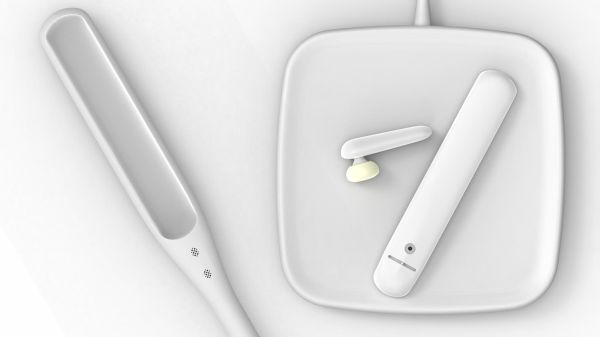
In this post, we will talk about a unique device that allows visually handicapped people to explore unknown places and socialize with people around them. Developed by Selene Chew, the concept known as Blindspot looks like a white cane but comprises a mobile phone, Bluetooth earpiece and detects low hanging objects through ultra sonic technology. She developed the smart device as a final year thesis project at National University of Singapore and seized the runner up James Dyson award with $3,200 as a prize.
Blindspot informs the user whenever a family member or friend is nearby and helps to reach them. The device does not have a screen anywhere; users navigate the menu with a tactile GPS navigator and listen the instructions through a Bluetooth earpiece. Navigator is actually a horizontally moving ball on the cane handle that points in the direction where the person is located; you just have to follow it. The cane also features a mobile phone, which can be detached from it and can be used as a normal mobile.
Blindspot locates the position of the user’s friends using geographical apps like Four Square and communicates the same to the user through a Bluetooth earpiece. After knowing that a friend is nearby, users can even call them using the integrated phone in the white cane. In addition, there are ultra sonic sensors on the cane that detect hanging objects and give warning to the user via earpiece. Sensors detect low hanging objects from 5 to 6.5 feet away and warn the user. This allows visually handicapped people to walk comfortably anywhere without any danger.
Both the phone and Bluetooth earpiece can be charged wirelessly. Like any latest smartphone, Blindspot has built in Wi-Fi, 3G and GPS connectivity. Overall, you can say this is a smart cane.
We are seeing this concept because of an incident that happened with Selene. Once she was going somewhere with some of her friends and one of her friends was unable to board the bus because of motion sickness. This incident triggered her that visually handicapped people face difficulties to reach their destinations as well as they are unable to initiate any conversation with their friends because they cannot see them at all. Then, she decided to design something that focuses on their needs and desires, and not just on their handicap. Things like entertainment and sharing things that are easily accessible to us but not to them. She conducted several interviews with visually impaired people to know what they want and what their needs are. The possibility to know that their friends are nearby got them excited.
The 23-year-old graduate is not going to commercialize the product right now, but she is looking for a suitable company that can further develop this project.
Via: Jamesdysonaward

